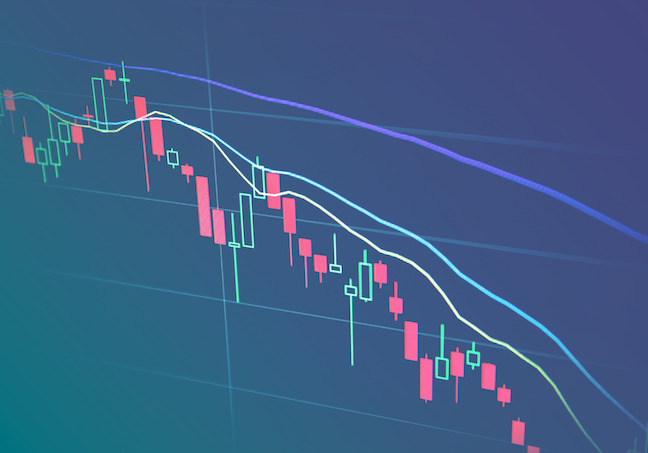What do investors, gamblers, and high-school sweethearts have in common? Most of them don’t know when to quit. Otherwise known in financial terms as loss chasing.
In this four-part series, we’ll do a deep dive into the human tendency to react destructively to losses within the context of investing. We’ll learn what it is, how and why it affects us, and how we can harness it to improve as decision-makers.
We’ll shed light on this complex topic by starting with the fact that most investors surely feel it when they incur a loss. What they do after the loss can be just as deterministic as what they did before.
This is not a theoretical article.
It’s about how I learned the hard way about the pain and devastating cost that can come from loss chasing. This painful lesson led me to understand the science behind my decisions and to develop the technology that can help you as an investor and ultimately save you from costly mistakes along the way.
Ready to learn more? Let’s dig in.
What Is “Loss Chasing”?

Before we get into what loss chasing is, let’s first address the biggest problem many investors face. And if this is your first article about emotional trading behaviors, buckle up, as you’re likely to encounter uncomfortable truths about active portfolio management.
But rest assured, it’s far better to know how to identify and manage the emotional impact of losses instead of being constantly governed by them.
The biggest problem that active investors face is that they don’t actually know what contributes to their performance. This is because traditional portfolio performance reporting doesn’t show how or why returns occurred in the way that they did – their account is either up, down, or “flat”.
And since most investors actively manage their portfolios by buying and selling, this means that they can’t pinpoint the drivers of their portfolios beyond price changes.
The drivers of performance are hidden in their transaction data and need to be surfaced and leveraged for behavioral insights. But before we get into how to do that, we must first talk more about what loss chasing is.
Let’s say you bought a share at $10 and its price dropped to $5; you’ve lost 50% of your investment (ouch). Buying more shares, after the price drop, is the action we are focusing on in this series.
This buying pattern is called multiple names including, “buying the dip”, “averaging down”, “revenge trading” and “loss chasing”, but the right term is partly dependent on the motivation and outcome.
To be fair, the term loss chasing doesn’t apply to everyone who buys shares in losing positions, but I’m using it to highlight the hazards of the behavior and contrast it with good tactical practices.
Why Do People Buy More Of A Losing Position?
 The simple reason is that the emotional impact of trading losses triggers subsequent reactions to reduce that emotional impact.
The simple reason is that the emotional impact of trading losses triggers subsequent reactions to reduce that emotional impact.
Many people fail to avoid destructive patterns that arise from being in losing positions, which I’ll describe in detail when we reach part two of this series, The Case Study.
The leading economic explanation behind this behavior is based on the fundamental theory of “utility” and “disutility”. These are the fancy-schmancy terms economists use to represent the experience of a “good” and “bad”, respectively.
Why Does Loss Chasing Make People Feel Better?

In terms of investing, when the price falls below what someone paid, the seemingly obvious method of reducing the “disutility” and pain caused by the loss is to act immediately by selling the position.
And yet, most people do the opposite and buy more shares at a lower price to lower their average cost.
Let’s use our original example to understand what I mean. Remember that share you bought at $10, but the price dropped to $5, so you lost 50% of your investment?
But if you buy another share at $5, then your new average cost basis is $7.50 and you’re “only” down 25%! Sounds reasonable, no?
And yet in the investing world, things aren’t always what they seem. Here’s what I mean.
Early in my investing career, I learned the hard way that loss chasing doesn’t erase losses. It also doesn’t improve the situation without learning proper discretion about when to buy more of a losing position.
Because in truth, buying more at a lower cost (without a defensible economic or technical rationale) is a purely behavioral move. And while it may alleviate negative emotions, it allocates more money to a losing position for behavioral – not economic – reasons.
This is a classic example of what is known as, regret-driven trading decisions, And how pure emotion can change the path of a portfolio if the emotional impact isn’t handled properly.
Lowering the average cost basis by buying more at lower prices does two things.
First, it reduces the pain of being in a losing position (“disutility of loss”).
Second, it gives us false hope.
Because buying more at a lower price is fueled by the common belief that the price will rebound (called “mean reversion”) and the investor will profit from the temporary price dip (which is why it’s called “dip buying”).
OK, enough lingo for now; we’ll dive back into the science behind this later in the series.
How Can We Know What’s Driving Our Active Investment Performance?

Sorry to be the bearer of bad news, but unfortunately, reviewing raw trading data doesn’t reveal much. And even if going line-by-line in the portfolio will invite post hoc justifications it still doesn’t show us how our actions affect our performance.
This is why Prof of Wall Street investor analytics were developed – to reveal deep, individual insights that cause performance and lead to better investing.
By better understanding behavioral analytics, we can uncover the reasons why people make or lose money and reveal how to improve investment performance by doing more of the good and less of the bad.
Final Thoughts
In the first part of this series, we scratched the surface of what loss chasing is, why people buy more of a losing position, why it makes us feel better, and are given a reason for hope as once we know more about our behavior, we can learn how to improve our investment performance.
In the second part of our four-part series, we’ll look at a real case study. We’ll see the effects of buying more of an asset when the press is less than what was paid for, and we’ll discuss the consequences of reactions to losses for a specific investor.
